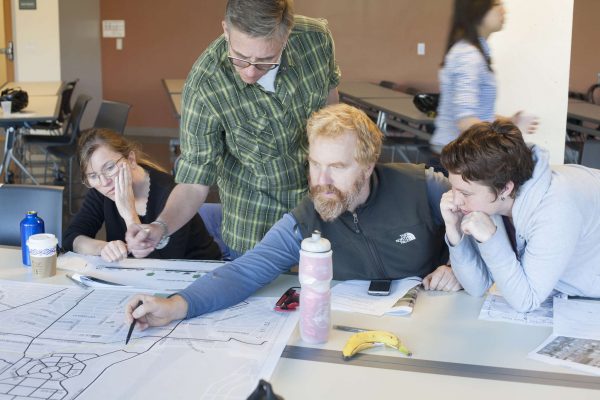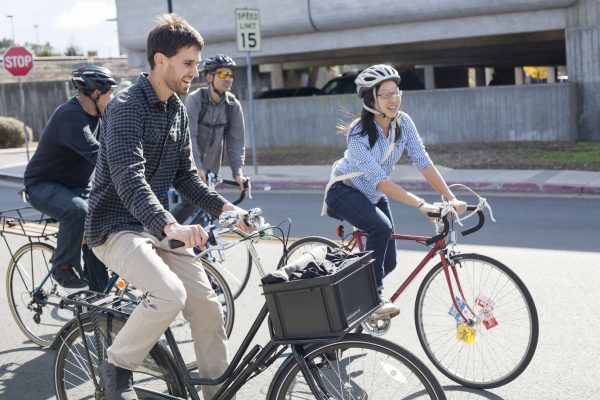
The San Francisco Municipal Transit Agency and local bicyclists came together Saturday to reimagine a more bike-friendly transportation corridor for 19th Avenue.
Representatives from the SFMTA invited local bicyclists to the J. Paul Leonard Library Saturday to discuss a proposed project that would realign the M-Ocean View Muni line to facilitate a growing population and alleviate traffic on 19th Avenue. The purpose of the meeting was to get feedback on designs before the agency begins the environmental review phase of the project.
“I like to think of this project as one that is pretty transformative for 19th Avenue because we would totally redesign the street to make it an easier place to cross and a much more pleasant place to be,” said Liz Brisson, manager for the 19th Avenue/M-Ocean View Project.
In 2011, Parkmerced signed a development agreement with the city to construct roughly 5,600 additional housing units in the area. Parkmerced also committed to investing $70 million in transportation infrastructure as part of the agreement, according to Brisson.
The SFMTA conducted a study for two years following the agreement, collecting information to determine feasible options for restructuring 19th Avenue to be more transit-friendly. Parkmerced and the city agreed to baseline improvements of the M-Ocean View line as part of their development deal, but concerns about transport conditions prompted the SFMTA to explore other options, Brisson said.

The new proposal includes moving the M-Ocean View line underground at St. Francis Circle to eliminate street crossings that cause major delays, using the new space to expand bicycle and pedestrian facilities.
“19th Avenue doesn’t work well for anybody right now,” said Brisson. “How can we possibly accommodate the people who are going to live in the 5,600 more housing units in Parkmerced.”
The project involves the construction of a station in Parkmerced and a bridge over Junipero Serra Boulevard to connect with existing tracks on Randolph Street. The earliest construction is expected to begin by 2020, according to the SFMTA’s final report following the feasibility study.
Mark Dreger, a former intern for the San Francisco Bike Coalition, grew up in the area and rides his bike and MUNI through the 19th Avenue corridor on a regular basis.
“The M Ocean View is chronically unreliable,” Dreger said. “I think anybody at SF State or anybody here should realize that.”
Brisson said that the average speed for a light rail vehicle above ground is 8.5 miles per hour during peak times. More than 66,000 cars drive down 19th Avenue a day, and fully separating the train and cars would reduce travel time by 8 minutes per trip, according to a fact sheet provided by the SFMTA.
Bert Hill chairs the San Francisco Bicycle Advisory Committee, which provides expertise to the city in its effort to reduce reliance on automobile transport. He said moving away from automobile-based transport would make the area much more livable.
“Anything we can do to eliminate the need for automobiles is only going to benefit the community,” Hill said.
Jason Henderson, a professor in SF State’s department of geography and the environment, said he encounters several physical barriers biking to campus every day. Henderson teaches several courses on transportation and land use, including bicycle geographies, which explores the cultural and political implications of bike infrastructure
“We need to be thinking about bicycle connectivity that gets us to the 21st century, not just waiting year after year,” Henderson said.




